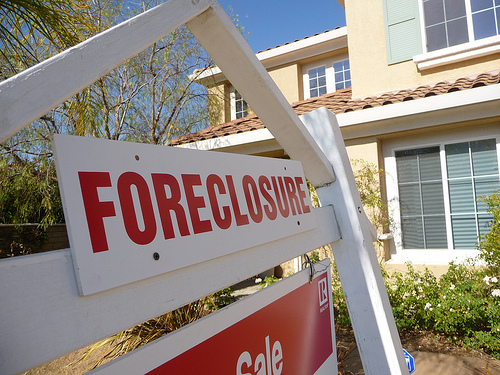
Flickr/respres
It’s called the housing industry’s “shadow market”: those houses where the owner has defaulted on their mortgage but is in mortgage limbo because foreclosure proceedings have yet to begin. Right now, that shadow market looms large. More homeowners are falling behind on their payments but banks, lenders, and servicers are so backlogged and buried in paperwork that essentially they can’t foreclose on people fast enough. As the Washington Post points out today, 5 to 7 million are eligible for foreclosure but haven’t been taken back by lenders yet. The takeaway here? Despite what you’ve heard to the contrary, new waves of foreclosures are on the horizon, and the housing industry’s quagmire—yes, it’s still a quagmire—has a long way to go before getting back to even keel.
Clearing out that shadowy backlog, economists say, could take almost three years. So, on the ground, what you’re left with is millions of homeowners living for free in their homes—they’re not paying their mortgage because they lost their job or had their hours scaled way back, but they’re not being foreclosed on, either. Soon to join that army of homeowners are the record-setting 11 million more people who are “underwater,” i.e., they owe more than their home is worth. These people are at risk of falling behind on their payments, too. And if they default, that shadow market will only grow, prolonging the housing mess.
From a economic standpoint, as Dean Baker says, the Post‘s article is kind of a no-brainer. Think basic economics: The housing bubble inflated demand for building new houses, all those house-in-a-box subdivisions started popping up, then when the market collapsed what’s left is a huge oversupply of houses. At this point, home prices are still dropping, and one factor pushing those prices down is new bursts of foreclosures. It also means that talks of the housing market “turning the corner” are most likely unfounded. In reality, the light at the tunnel’s end is a long way off.















